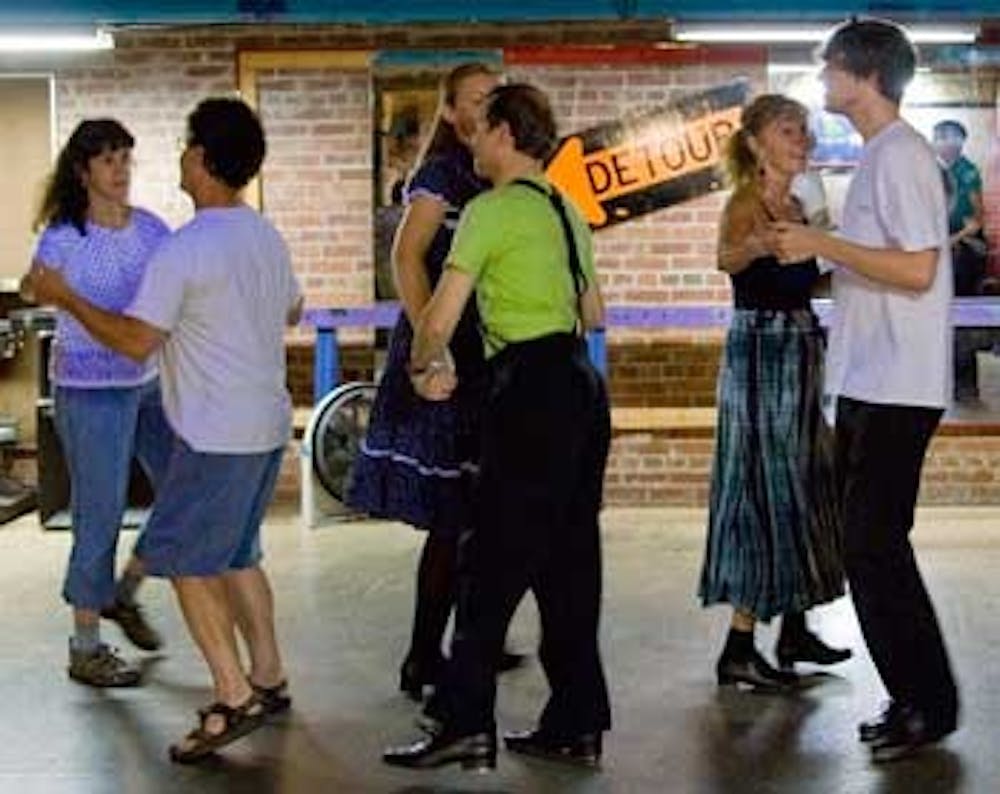With a bright smile a whooping yell and a rhythmic tap of her feet Jean Healy has been dancing most of her life. At 61" the Hillsborough resident is grateful to still be able to share her love of movement with those around her.
""I'm one of the old farts"" Healy said. I can't believe I'm still clogging at my age.""
Healy is one of the original founding members of the Cane Creek Cloggers"" a local dance troupe dedicated to the American folk tradition of clogging.
And the group wants to spread that tradition through free lessons to the community starting today. The group offers a series of clogging lessons each year.
""Clogging is just a fun celebration of music" dancing and community" said member Diana Montgomery, who lives in Orange County.
The group, whose members range in age from 20-somethings to veterans in their early 60s, was founded in 1980 as a way to explore and preserve a storied American folk tradition.
Clogging has roots in many places"" said Ruth Pershing, the group's resident clogging historian. Some argue it comes from the British Isles"" some find roots in African-American traditions and some see Native American influences.""
In performance" these varied influences blend together in a pulsing swirl of motion and energy. Clogging often associated with Appalachian folk culture" closely resembles a highly rhythmic form of countrified tap and step dancing.
""It started as a celebration in somebody's barn or porch" just having a good time and being moved by the music" said longtime clogger Jim Kirkpatrick. It's an attractive mix of rhythm and music.""
Rehearsing in the basement of the Chapel Hill Post Office on a Sunday before their performance at Chapel Hill's FestiFall" the Cane Creek Cloggers shared high-spirited yelps" shouts and claps as they tapped elaborate patterns across the floor.
""Anybody who sees clogging" it just makes them happy Pershing said. Even if you're in a glum mood" it cheers you up just watching it.""
Other team members stepped in for tired dancers as the cloggers rehearsed dances with whimsical names like ""Flirt"" Chaos"" and ""Jubilee."" The dance ""Black and Blue"" demonstrated the ""hambone"" clogging style.
A pulsing" steady set of percussive slaps of the arms chest and face hambone dancing is an old and complicated method of keeping the beat without actual instruments. It originated with African slaves in the South said team member Cheryl Junk" also a senior academic adviser at UNC.
""There's always something new and exciting to learn when we dance"" Junk said.
After Junk's husband Daryl joined the group last year, she eagerly awaited her turn to join while recovering from an injured foot.
I love being a part of the old-time music revival"" she said.
In tribute to the folk origins of the dance style, the women wear colorful calico print dresses and the men dress in high black pants, suspenders and neatly pressed collared white shirts.
For four weeks every fall, the group seeks to spread their love of clogging to interested locals.
Around here" the public is starting to appreciate clogging more Pershing said. We want to teach anyone who is interested — youth students working adults" retired people. Everyone.""
Two Cane Creek members were pulled from these lessons in the past. Caroline Irick and Forrest Oliphant" both in their 20s" attended the classes and fell in love with the movement and the group.
""I'm new to the area" and it's been a great way to get involved" Irick said.
But classes aren't really auditions for the group — they're creative outlets, members said.
There aren't a lot of people who can sing maybe" but everyone can dance" Pershing said. It could turn out to be something they truly love.""
Attend the free clogging lessons
When: 7:30 p.m. to 8:30 p.m.
Dates:
- Today
- Oct. 21
- Oct. 28
- Nov. 4
Where: The Teen Center under the Franklin Street Post Office
Contact the Features Editor at features@unc.edu.




